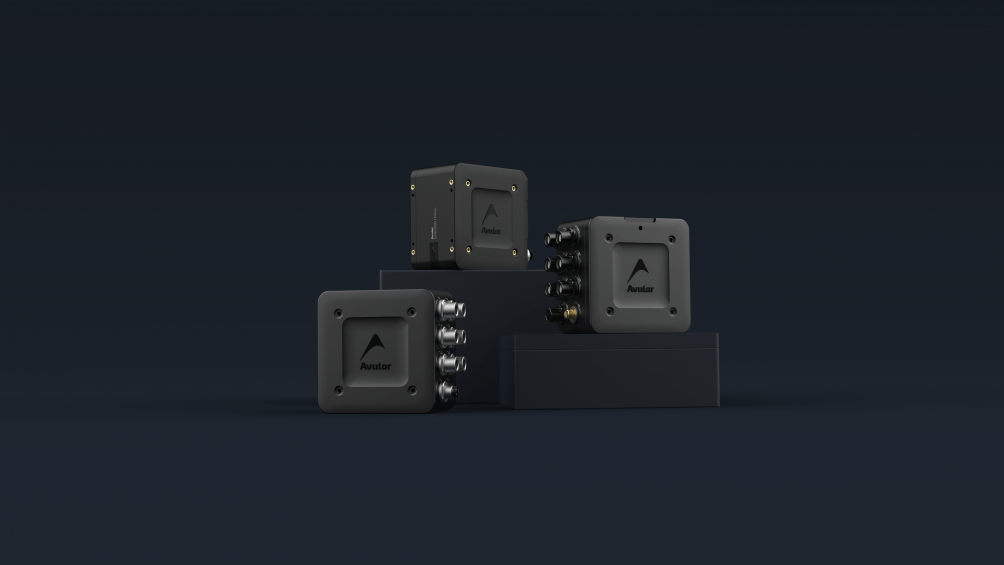“In just about every business in the world, robots get to play a role in some form or another,” says Yuri Steinbuch, a member of Avular’s board of directors. This ‘robot revolution’ is something that start-up Avular wants to speed up. The company has already done that with drones. With Prime, they are taking it to the next level. The Prime can turn any machine into a robot, Steinbuch asserts.
Last week, Avular filed a patent for the Prime. A black box measuring eight by eight centimeters and five centimeters in height, which you can use to transform machines into robots. For example, an automatic asparagus cutting machine that lightens the labor-intensive work of asparagus cutters. At the moment, someone is still needed to operate the machine; the Prime would eliminate the need for that.

Costly workforce
“A lot of companies want to deploy mobile robots, but often lack the expertise to do so,” Steinbuch explains. The difference between a machine and a mobile robot is that the latter can act autonomously without any human intervention. “That valuable workforce can then be used in other ways.”
Creativity
“Our goal is that customers can stay focused on their core business, we just enable their machines to become robots. Avular wants to lower the obstacles that surround robots and make sure that people are no longer suspicious of robots, says Steinbuch. “So that we can show what’s possible with robots. If you let your creativity loose, so much is possible. How those ideas become reality, that’s where we come in.”
Build your own robots
Avular has developed The Essentials product line with this in mind; products that companies can use to build their own robots. Avular is the first to introduce the Prime to the market. A real-time processor that is ideally suited for sensor readouts and controlling motors, lights, and robot arms, Steinbuch goes on to explain.
“Nowadays, there are electronics between accelerator pedals and engines. If you disconnect those electronics and stick them in the Prime, then the Prime becomes the accelerator pedal. You can do the same thing with a steering wheel. Or with sensors such as a temperature sensor or a location indicator.” The standard module comes with wifi, Bluetooth, and a USB connection. “You can also connect a 5G module to a machine in Dubai if you want to communicate with it there.”
Extensions
Steinbuch clicks an extension module onto the basic module which has six connectors. Since the Prime is modular, it is easy to expand, he explains. Up to 64 modules. “Not that I think there will be so many connections, but it can be done.”
In order for all connected modules to react as fast as the basic module does, the Prime has its own communication protocol. However, there are more software features inherent to the Prime. Such as the user-friendly interface, Cerebra, which enables the customer to monitor on a desktop in real-time what is happening and adjust what the robot is doing. “You can see all the signals sent by your robot and you can adjust the different parameters in real-time. For example, let the robot drive somewhere else or clean a different corner.”
Blocks and lines
Another important element is the modular software architecture, Steinbuch notes with justifiable pride. “We have developed a whole library of basic block codes that we can use to program the robot to do what it’s supposed to do in any situation. A lot of software commands are needed, for example, to make the robot turn to the right. “You shouldn’t do that abruptly, but gradually. You have to take into account the rotation radius and the size of the wheels, among other things.” A mathematical calculation is behind every action and it is translated into blocks and line codes. This is work for a programmer.
As this work is so difficult, the people who can do it are scarce, marketing manager Lisa Janssen adds. “We have a great team here, working like mad to program all those blocks and lines. The customer doesn’t have to do that anymore. They simply buy one of those block codes and no longer need to hire new staff to program the robots themselves.” The robot receives its instructions via various programs. The robot can be programmed with MATLAB Simulink or Robot Operating System (ROS), or programming languages such as C(++). The customer just needs to choose what is appropriate for their specific applications.
Brains
Avular also offers services that take programming completely out of your hands. Janssen: “The Prime gives the machine a brain, so to speak. With it, we teach the machine, among other things, where it is, that it avoids colliding with people, that it stops in front of an obstacle and drives around it. Smart things like that. This is especially appealing to Janssen – “that you create a robot together with a customer.”
All his life, Steinbuch has believed in robots. “Robots are really going to enable us to save lives, make our lives more sustainable, and optimize processes. That can take us very far. I want to do my bit for that.”
Read more about Avular:
Avular: tools to create your own mobile robot
Avular will make baggage processing even more accurate